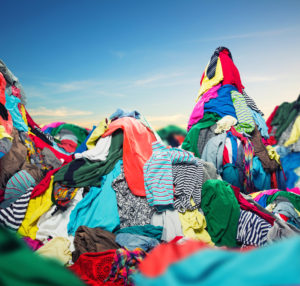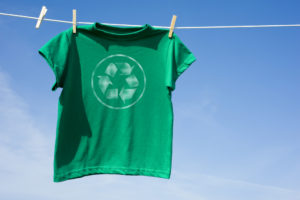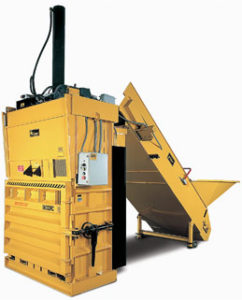 Emma pointed out, “The fashion industry is the second highest pollutant of fresh water on the planet…It has such a huge environmental impact…It’s not enough for me anymore that it’s a beautiful item or a beautiful piece, I want to know that it’s not leaving a negative mark.”
Emma pointed out, “The fashion industry is the second highest pollutant of fresh water on the planet…It has such a huge environmental impact…It’s not enough for me anymore that it’s a beautiful item or a beautiful piece, I want to know that it’s not leaving a negative mark.”
The dress that Emma wore to the Met Gala was made out of plastic bottles and was entirely sustainable. Plastic is massive pollutant on our planet, and rather than making the plastic part of the problem, the plastic bottles were made into Emma’s dress and part of the solution. The dress is also composed of three different clothing elements: trousers, a skirt, and a top. It was made to be versatile so it could be re-worn in many different ways.
If you buy something, do you think you will wear it 30 times? “If you can,” Emma says, “That is how you know it is a sustainable purchase.” To watch the entire video interview with Emma Watson and see the dress, click here.
What is Sustainable Fashion or Eco Fashion?
How you can Practice Sustainable Fashion Habits:
 Only buy a new item if you think you will wear it at least 30 times.
Only buy a new item if you think you will wear it at least 30 times.- Buy clothing second-hand or at thrift stores.
- Encourage hand-me-down clothing.
- Repair, mend, or tailor clothing instead of throwing it away.
- Donate clothes you no longer need to a friend or thrift store.
- Up-cycle clothing or textiles into something new.
- Instead of buying one-time use clothes for a special occasion, borrow them from a friend.
- Support clothing manufacturers who have sustainable practices and materials.
- Look for sustainable textiles derived from eco-friendly resources.
- Purchase pieces that are versatile and classic that you can wear many different ways.
How Clothing and Textiles are Recycled
- Clothing can be donated or sold to another person at a discount price (i.e. garage sale, eBay, thrift, Goodwill Stores, etc.)
- Clothing and textiles can be collected, baled, and exported in bulk to developing countries. Read how Textile Waste Diversion does it here.
- Clothing and textiles can be collected, baled and recycled back into raw materials to be made into new apparel or non-apparel products. Learn more about textile balers and recycling here.
Textile Waste and Textile Recycling Statistics
These stats were collected by The Council for Textile Recycling.
 The U.S. EPA estimates that textile waste occupies nearly 5% of all landfill space.
The U.S. EPA estimates that textile waste occupies nearly 5% of all landfill space.- While the EPA estimates that the textile recycling industry recycles approximately 3.8 billion pounds of post-consumer textile waste (PCTW) each year, this only accounts for approximately 15% of all PCTW, leaving 85% in our landfills.
- The average US citizen throws away 70 pounds of clothing and other textiles annually.
Harmony Enterprises Inc. makes balers and trash compactors for recycling and waste management. Many people associate our products with materials such as aluminum, paper, and plastic, but our M60STD Baler, S60XD Baler, S60XDRC Baler are also used to compact and bale textiles and clothing. Taking care of the environment is our job and yours too. Let’s all do a little more to make our clothing purchases and the life cycle of our clothing beneficial for the earth. For more information on our textile balers, call us at (507) 886-6666 or click here.
Interested in reading articles on recycling, reducing waste, and helping or global environment from Harmony Enterprises? Subscribe to our monthly e-newsletter here.

